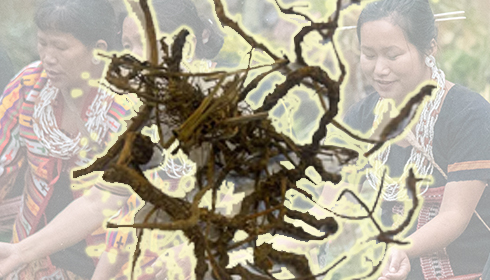
Herb revered by tribes of Arunachal have immense medicinal potential: Study
Xia & He Publishing Inc. recently published a peer-reviewed book describing Coptis teeta Wall, known by most in South Asia as "Mishmi Tita," as an amazing botanical treasure that grows in China, Bhutan, India, and Nepal. The Red Data Book includes this unusual medicinal herb, highlighting its great value and the urgent need for conservation efforts.
The thorough review explores the traditional uses, pharmacological properties, and phytochemical makeup of C. teeta, based on a careful examination of 69 publications published between 1982 and 2023. After a comprehensive literature search on sites like PubMed, Google Scholar, and others, researchers found that it is essential to traditional medical procedures.
The Adi, Galo, and Nyishi tribes in the lush surroundings of Arunachal Pradesh have long used C. teeta to treat everything from malaria to digestive problems. The Nyishi treat eye problems with the plant's rhizomes, while the Adi use leaf and root decoctions to treat malaria. As an example of its adaptability in traditional medicine, the Lhoba people in China use its roots to stop bleeding and treat intestinal problems.
Alkaloids abound in C. teeta, most notably berberine, a well-known chemical known for its antibacterial and anti-inflammatory effects, according to phytochemical studies. Studies have demonstrated its effectiveness against infections such as Staphylococcus aureus, as well as its potential use in the treatment of diabetes and inflammatory diseases. Its antioxidant properties—mostly attributed to berberine—also point to promising directions in the fight against oxidative stress and maybe even cancer therapies.
Though C. teeta has therapeutic potential, habitat destruction and unsustainable harvesting methods pose immediate threats. Arunachal Pradesh's efforts to cultivate this species demonstrate its preference for acidic, moist soils that facilitate increased cultivation efforts.
Together with habitat protection projects and educational campaigns, conservation efforts include both in-situ and ex-situ methods. Through community awareness and involvement, these projects seek to protect C. teeta and its priceless medicinal legacy for coming generations.
Scientists support further investigation into C. teeta's bioactive elements and environmentally friendly cultivation methods as studies reveal its pharmacological potential. Maintaining this botanical wonder not only helps to maintain biodiversity, but it also makes its full therapeutic potential available to the world's healthcare system.